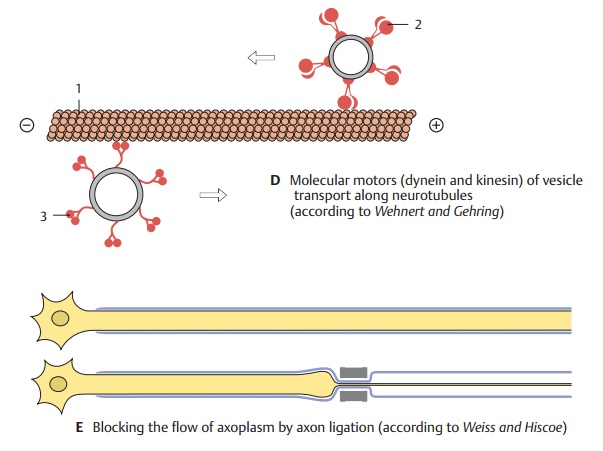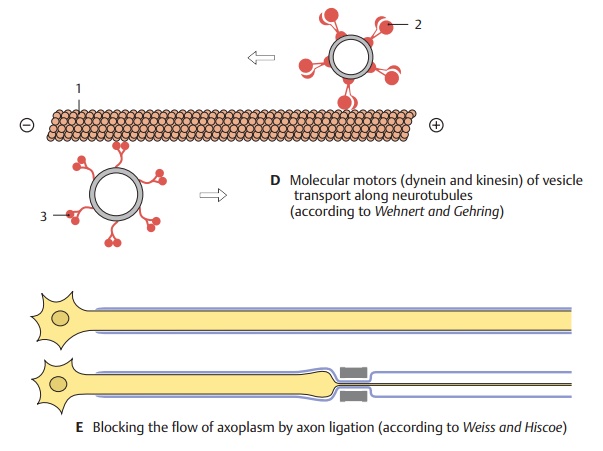Chapter: Human Nervous System and Sensory Organs : Basic Elements of the Nervous System
Axonal Transport - The Synapse

Axonal Transport
The
transmitter substances or their synthesizing enzymes are produced in the
perikaryon and must be transported to the axon terminal. The microtubules of
the neuron, neurotubules (D1), play a key role in thistransport
mechanism. If they are destroyed by applying the mitotic poison colchicine, the intra-axonal transport stops. This rapidtransport of material is
energy-dependent and takes place in vesicles that are moved along the
microtubules by motor proteins. The
retrograde transport (in the direction of the cell body and toward the minus
end of the microtubules) is mediated by dynein
(D2), while the anterograde
transport (in the direction of the axon terminal and toward the plus end of the
microtubules) is mediated by kinesin
(D3). The transporting vesicles are
endowed with several motor proteins, the ATP-binding heads of which interact
with the surface of the microtubule in an alternating and reversible fashion.
This results in ATP being hydrolyzed, and the re-leased energy is converted
into molecular movement that causes the vesicles to roll along the microtubules
in the target direc-tion. The velocity of the rapid intra-axonal transport has
been calculated at 200 – 400 mm per day. Proteins, viruses, and tox-ins reach
the perikaryon by retrograde transport from the axon terminals.

In addition
to the rapid intra-axonal trans-port, there is also a continuous flow of axo-plasm which is much slower,
namely,1 – 5 mm per day. It can be demonstrated by ligating a single axon (E); proximal to the constricted site,
the axoplasm is held back and the axon shows swelling.
The
anterograde and retrograde transport mechanisms are used in neuroanatomy to
study connecting tracts .
Related Topics